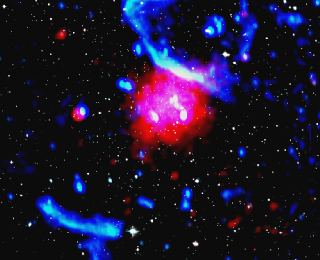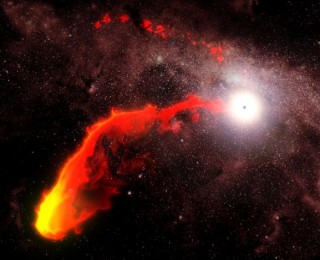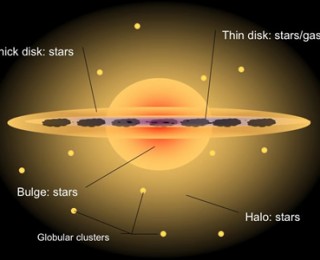by Andrew Emerick | Mar 21, 2014 | Daily Paper Summaries
Supermassive black holes are everywhere in our Universe, but we don’t know where they came from. Supermassive stars could have given birth to these massive objects. However, that is not all these fifty to one hundred solar mass stars could be responsible for…

by Andrew Emerick | Feb 11, 2014 | Daily Paper Summaries
Galaxy clusters aren’t just a bunch of galaxies – they are a bunch of galaxies surrounded by even more gas. This gas is usually seen very well in X-ray emission, and can also have interesting radio emission features. Astronomers have yet to fully understand the origin of these radio features, though recent observations continue to offer insights into their formation.

by Andrew Emerick | Jan 20, 2014 | Daily Paper Summaries
The black hole at the center of our galaxy, Sgr A*, is a very picky eater. However, with the discovery of the G2 cloud, astronomers have had the opportunity to watch the infrequent feeding process in Sgr A* in action. While the origin of this cloud is still debated, research is beginning to suggest that G2 is a gas cloud that was ripped away from a giant star in orbit around our galaxy’s central black hole.

by Andrew Emerick | Dec 20, 2013 | Daily Paper Summaries
How the various structures within our own Milky Way galaxy evolved is still an open question that astronomers have been slowly piecing together for a very long time. These galactic archaeologists are beginning to test a previously proposed method known as “chemical tagging” to fingerprint stars in our galaxy and trace their origin.

by Andrew Emerick | Nov 18, 2013 | Daily Paper Summaries
Magnetic fields are ubiquitous in the Universe. Everything including stars, solar systems, galaxies, galaxy clusters, and even large scale voids have magnetic fields. We know magnetic fields exist in the Universe, but have had a challenging time uncovering both their origin and evolution. Today’s astrobite discusses a recent paper exploring how magnetic fields evolved in young galaxies through computational simulations. It is one step further in unlocking the history of magnetic fields in our Universe.




